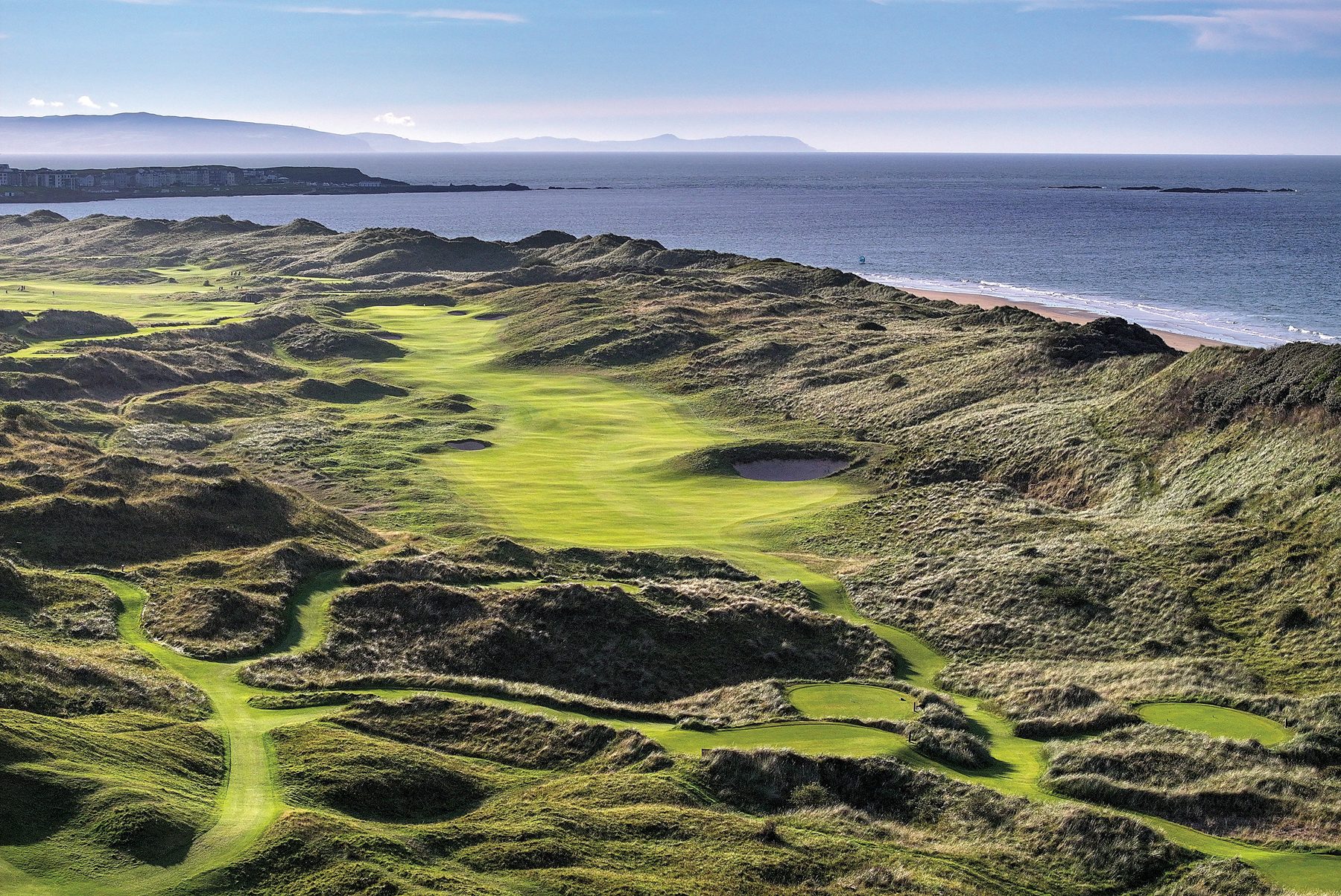
alfway through lunch at Sunriver Brewing Company’s gastropub in Bend, Oregon, a member of the wait staff strikes up a conversation with a golfer in our group whose hat bears the logo of Bandon Dunes’ par-3 course. “Love your Preserve hat,” the server begins. “I was out there a couple weeks ago, and it was just heaven.”
Such is the reality of travel-worthy golf in the Beaver State. For the better part of two decades, Mike Keiser’s influential resort along the southern coast, about 165 miles from downtown Bend, has become synonymous with championship-caliber golf in Oregon. Chances are, if you’re planning an Oregon golf trip and the impending journey makes its way into conversation, assumptions will be made it’s to Bandon Dunes.
And yet, Central Oregon is a comparable nirvana for travelers who dream about hammering drives down tightly mown fairways and stroking putts on smooth, fast-rolling greens. Thirty golf courses exist within 30 miles of downtown Bend, the vast majority of which are open to the public. Better still, many of them transport golfers to distinct landscapes and onto diverse terrain, with several delivering dramatic vistas of the nine nearby mountain peaks.
Of course, a Central Oregon golf getaway is not just about the golf. Exceptional food and world-class beer are always at the ready to round out a trip to Bend—to the point where some golfers may have difficulty deciding which of those three experiences left the more indelible impression. As with any golf journey, however, the travel planning always begins with the golf that’s to be played, so it’s best we start there.
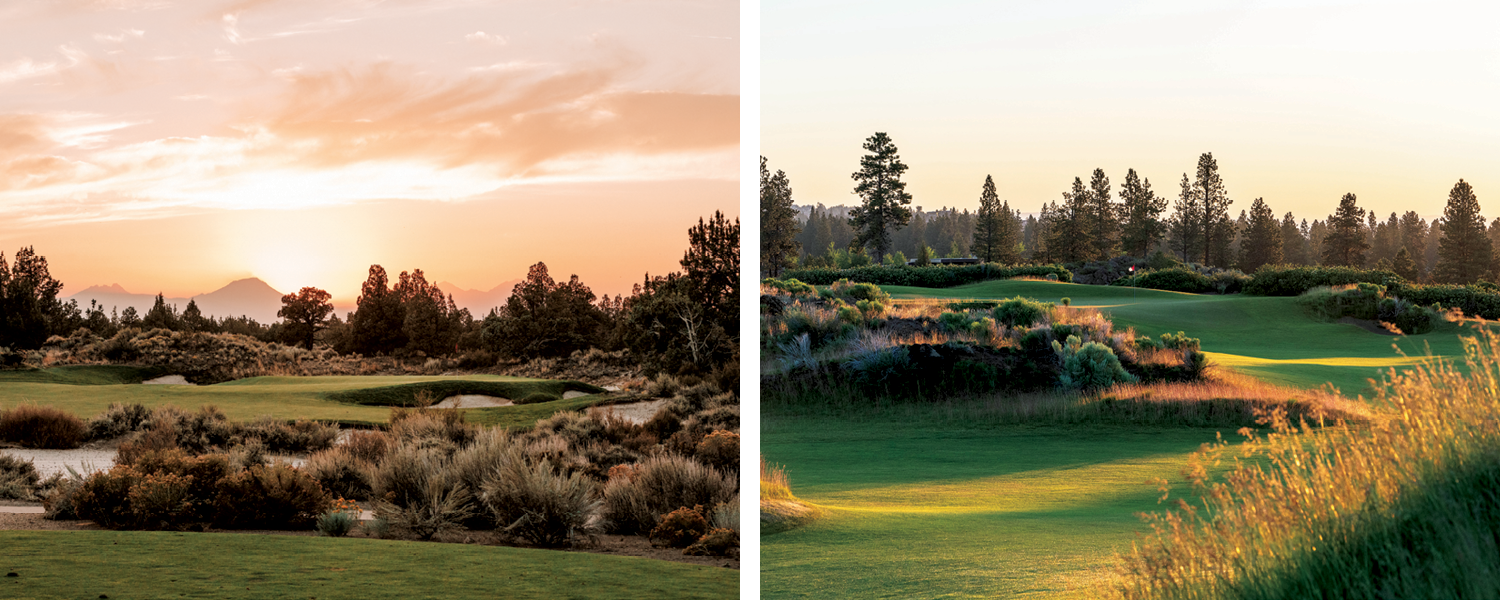
If you put stock in any of the prominent golf publications’ annual lists of top-ranked American courses, you’ll find as many as eight Oregonian layouts inside the top 100 open to the public—three of which are located in or around Bend. The most celebrated of that bunch is the Nicklaus Course at Pronghorn Golf Club, a former private, high-desert course that’s now open for public play. Built in 2004, the 7,379-yard layout delivers a rollercoaster of mixed emotions and showcases the Golden Bear both at his best and worst as a course designer.
Almost assuredly, first-time visitors to the course will walk off the 8th green cursing Nicklaus’ name. Stretching beyond 600 yards from the back two tees, the downhill par-5 plays slightly uphill to begin and requires players to position their drives in an area that not only pinches in on both sides but is punctuated by four steeply faced bunkers. From there, the fairway narrows considerably through the middle section of the routing before a large pond emerges down the right side.
The most celebrated of that bunch is the Nicklaus Course at Pronghorn Golf Club, a former private, high-desert course that’s now open for public play."
The 12th and 13th holes, by contrast, are two masterfully designed short par-4s that challenge players in starkly different ways. Much of the landing area on the 342-yard 12th hole, for example, is obscured by a rocky outcropping on the left. Players who ignore the temptation to drive the elevated green and instead hit tee shots that leave between 80 and 100 yards in will be rewarded with a level lie and a manageable approach. On the 13th, a broad water hazard guarding the inside edge of the angled fairway is the only worrisome hazard. That hazard extends all the way to the front edge of the green, but in this instance, what you see is what you get, and it’s up to you to decide how daring to be off the tee.
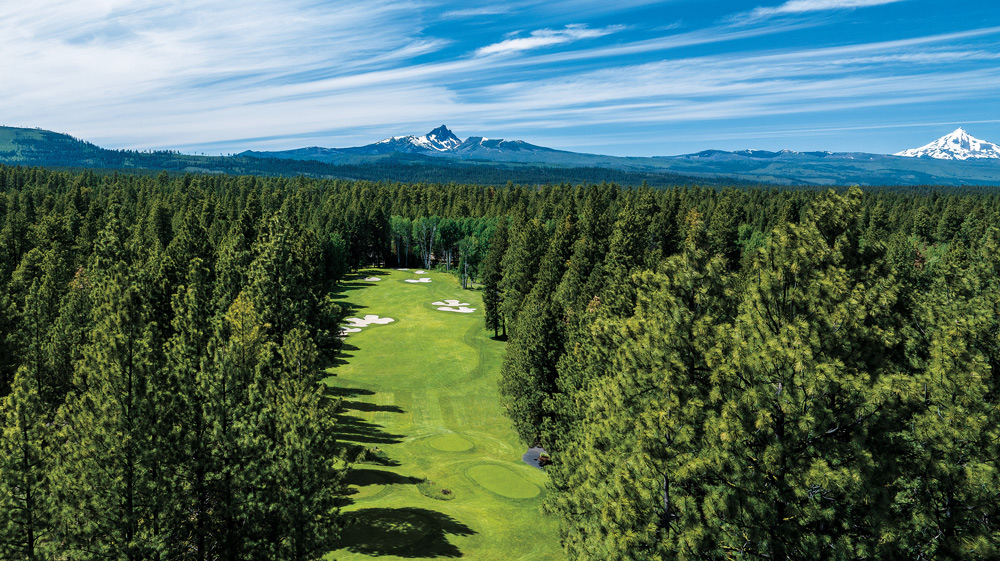
A 40-minute drive south brings golfers to Tetherow, arguably Central Oregon’s most luxuriously appointed golf resort—and most misunderstood course. Designed by David McLay Kidd, the 7,283-yard layout has an undulating topography, fescue-planted fairways and firm and fast conditions that inevitably draw analogies to courses in McLay Kidd’s Scottish homeland. But according to the architect—who now makes his permanent home in Bend—it’s not that simple.
“It’s so much more dynamic and there’s so much more depth to the strategy that speaks to golf from where I’m from,” he says, comparing Tetherow to traditional parkland layouts. “If you’re playing your average parkland golf course—as long as you hit short grass off the tee—you can play into greens and maybe get your ball to stop. At Tetherow it just doesn’t happen like that. You’re not going to be able to hit a mid-iron and stop it quickly, so you really have to think about where the pin is and then where you are in the fairway in order to get that ball to come to rest somewhere close to the hole.”
McLay Kidd’s best advice for players knocking it around his track is to take one more club than they need on their approach shots but to ease back on their swing speed. “By doing so,” he explains, “you’ll take spin off the ball, and the ball will be more likely to run and bounce and roll.”
It’s sage advice, especially for those who are experiencing the course for the first time. “I try to tell them that this might not be like anything they’ve ever played before,” he says. “If they’re not somewhat prepared for it, it can take them by storm.”
Other standout courses in Central Oregon include Glaze Meadow at Black Butte Ranch, a layout that offers dramatic views of surrounding mountain peaks, and Crosswater at Sunriver Resort. At the latter, the Big and Little Deschutes rivers routinely meander alongside and occasionally bisect the fairways of the Bob Cupp–designed course. At some point throughout your round, should you find yourself facing an all-or-nothing scenario, take solace in the fact that the climactic final charge in the 1969 John Wayne western True Grit was filmed in the meadow where the course now resides. If nothing else, a glancing thought of the Duke might offer the boost of confidence you need to pull off that heroic shot.
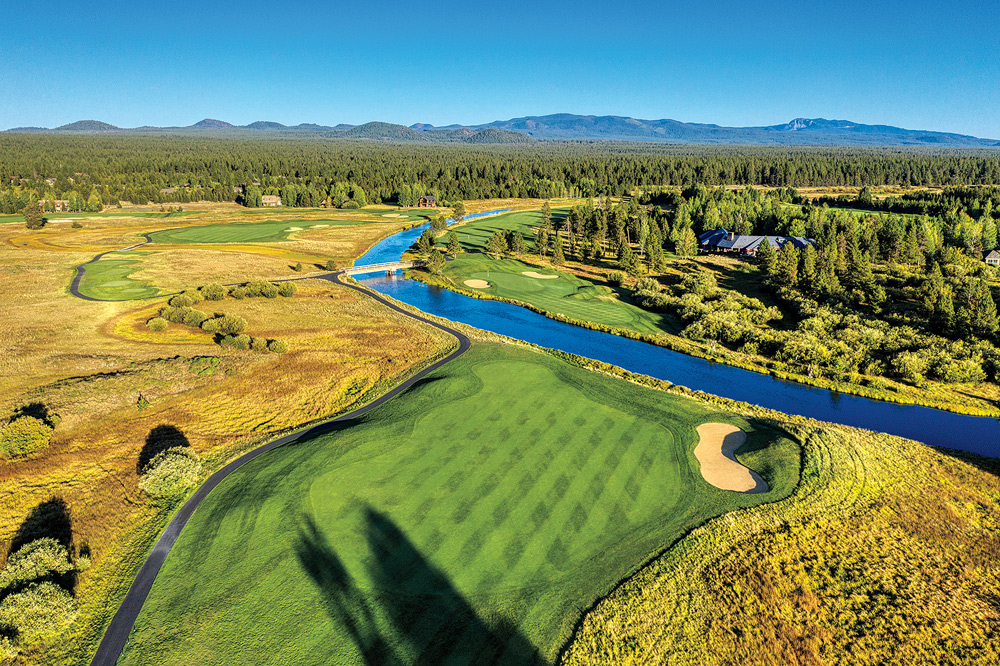
At a later point on our trip, my travel buddies and I are on the hunt for a cocktail bar—a hidden one to be more specific—and as any good speakeasy goes, this one is proving difficult to find. Our host leads on undeterred; yet, as one of the few following in his footsteps, I can’t help but think that not only are we not getting any closer, we may be moving farther away.
We first climb a flight of stairs at McMenamin’s Old St. Francis School in Bend—a 1936 Catholic schoolhouse turned quirky hotel, circa 2004—then traverse a long, wood-paneled hallway lit by artfully shaped ceiling lamps, and eventually come to another stairway where the process repeats itself. It’s been almost two decades since I last was a college student, but this journey has all the makings of an undergrad’s quest to find that elusive upperclassmen’s party.
Finally, we arrive at a door marked Broom Closet. Inside, a dozen or so vintage, long-bristle brooms hang from the walls. The faint din of laughter and conversation can be heard, though we’re seemingly the only ones in this cramped space. As we narrow in on the source, we come to a wall that hinges inward to reveal a sparsely lit, wood-paneled room decorated with framed rock album cover art.
Those who seek out this bar don’t come for the ambience, however. They come for the cocktails, which include—among others—the Lion’s Tail (Rittenhouse rye, allspice dram, lime juice and cinnamon), the College Old Fashioned (Buffalo Trace, banana liqueur, Jägermeister) and the Hivemind (mezcal, lemon juice, Gran Classico Bitter liqueur and honey).
Equally satisfying cocktails are served at Sunriver Resort—more specifically at the Owl’s Nest, an old sports bar that recently benefited from a redesign and now operates as more of a gastropub. And while Bend is undoubtedly a gastropub type of town, it is not without its fine-dining options. At Tetherow Resort, if you plan ahead and book a private dinner, head banquet chef Amanda Woodward will prepare a four-course meal to remember, with dishes that might include wagyu tartar, a king crab Caesar salad and Chilean sea bass with Ossetra caviar.
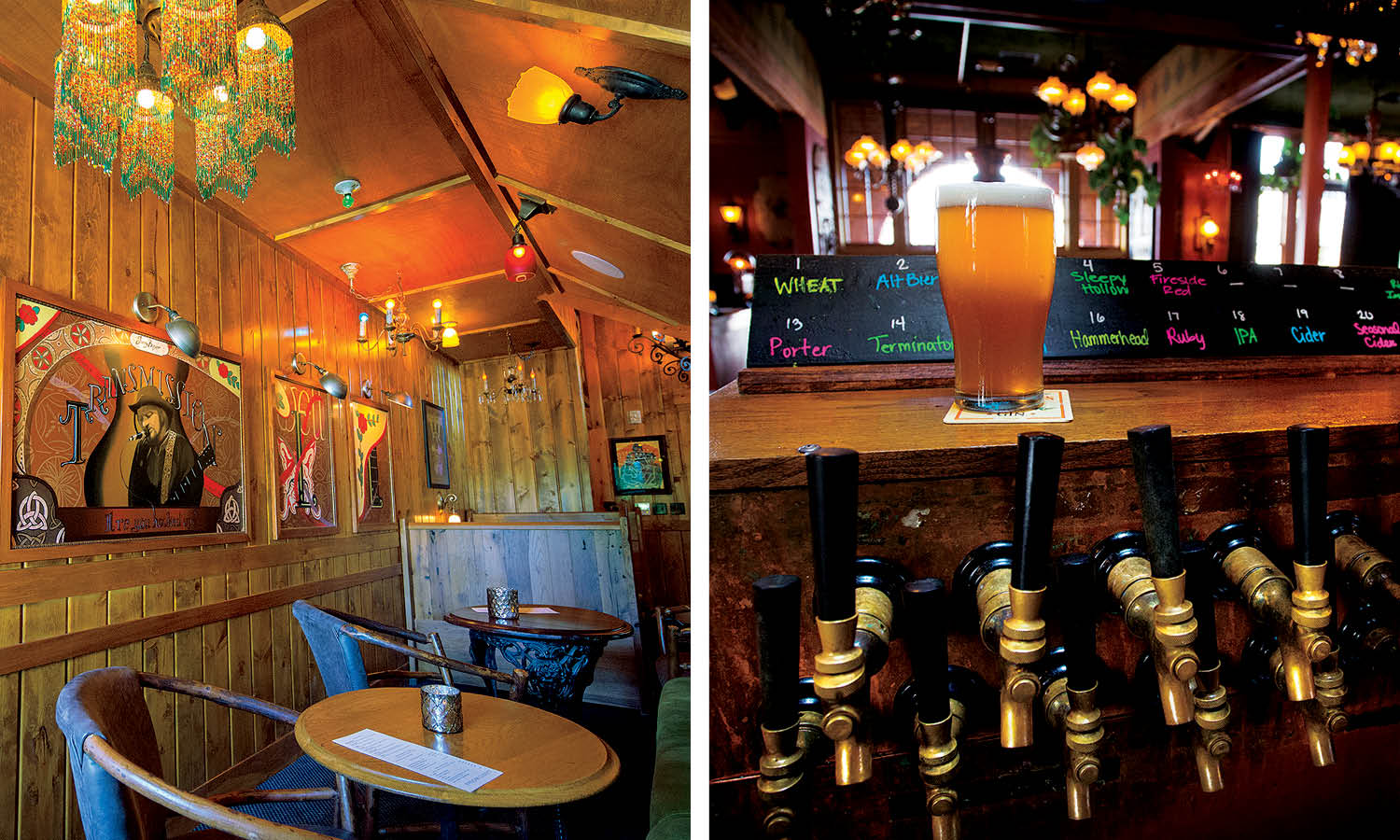
Of course, if greater Bend is known for anything aside from its great outdoors, it’s the award-winning beer crafted from any one of the area’s more than 30 breweries. The aforementioned Sunriver Brewing shines brightest for what it calls its Haze Factory, a rotating selection of more than a dozen hazy IPAs, all of which measure in at less than 7% ABV, an important detail considering each offering in the lineup is easily crushable.
In downtown Bend, the Deschutes Public House offers up almost two dozen beers on tap at any one time, including its most popular (and best) offerings—Fresh Squeezed IPA, Black Butte Porter and Obsidian Stout. If you’re looking for some grub to pair with the ice-cold pint that you’ve ordered, don’t pass up the Elk Burger with grilled jalapeños.
If there’s a single craft beer producer in Bend that’s not to be missed, it’s Crux Fermentation Project. Now in its second decade, the brewery offers more than two dozen beers on tap daily, most of which are as interesting as the establishment’s locale—a former AAMCO Transmission plant. Standouts from my late spring visit included Tangy Boomerang, a fruited Gose brewed with lactose that will easily convert sour beer skeptics; Gypsy Coolship No. 5, a barrel-aged farmhouse ale characterized by a rounded tartness; and Slow Rush, a complex and smooth bourbon-barrel-aged coffee imperial stout that drinks much easier than its high alcohol content would suggest.
Like its beers and breweries, Bend offers something for just about everyone, from skiing and rock climbing to live music and bar hopping. The region’s variety is especially pronounced for golfers, who enjoy a collection of courses that are as diverse and dynamic as any in the Pacific Northwest—yes, even including those found 165 miles away at Oregon’s most famous golf destination.
Follow Us On


| Cookie | Duration | Description |
|---|---|---|
| cookielawinfo-checkbox-analytics | 11 months | This cookie is set by GDPR Cookie Consent plugin. The cookie is used to store the user consent for the cookies in the category "Analytics". |
| cookielawinfo-checkbox-functional | 11 months | The cookie is set by GDPR cookie consent to record the user consent for the cookies in the category "Functional". |
| cookielawinfo-checkbox-necessary | 11 months | This cookie is set by GDPR Cookie Consent plugin. The cookies is used to store the user consent for the cookies in the category "Necessary". |
| cookielawinfo-checkbox-others | 11 months | This cookie is set by GDPR Cookie Consent plugin. The cookie is used to store the user consent for the cookies in the category "Other. |
| cookielawinfo-checkbox-performance | 11 months | This cookie is set by GDPR Cookie Consent plugin. The cookie is used to store the user consent for the cookies in the category "Performance". |
| viewed_cookie_policy | 11 months | The cookie is set by the GDPR Cookie Consent plugin and is used to store whether or not user has consented to the use of cookies. It does not store any personal data. |